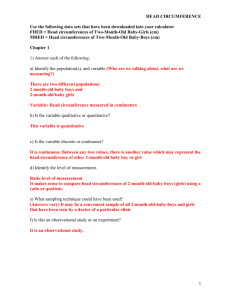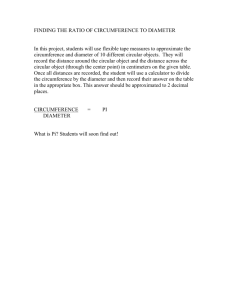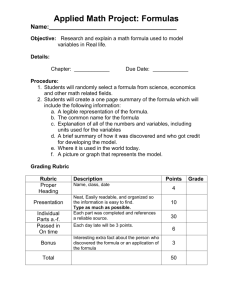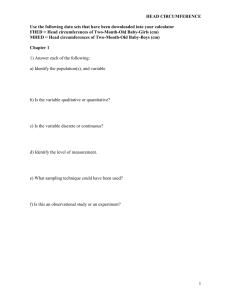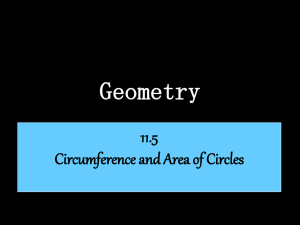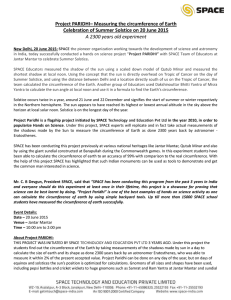Ch. 11 - Head circumference
advertisement
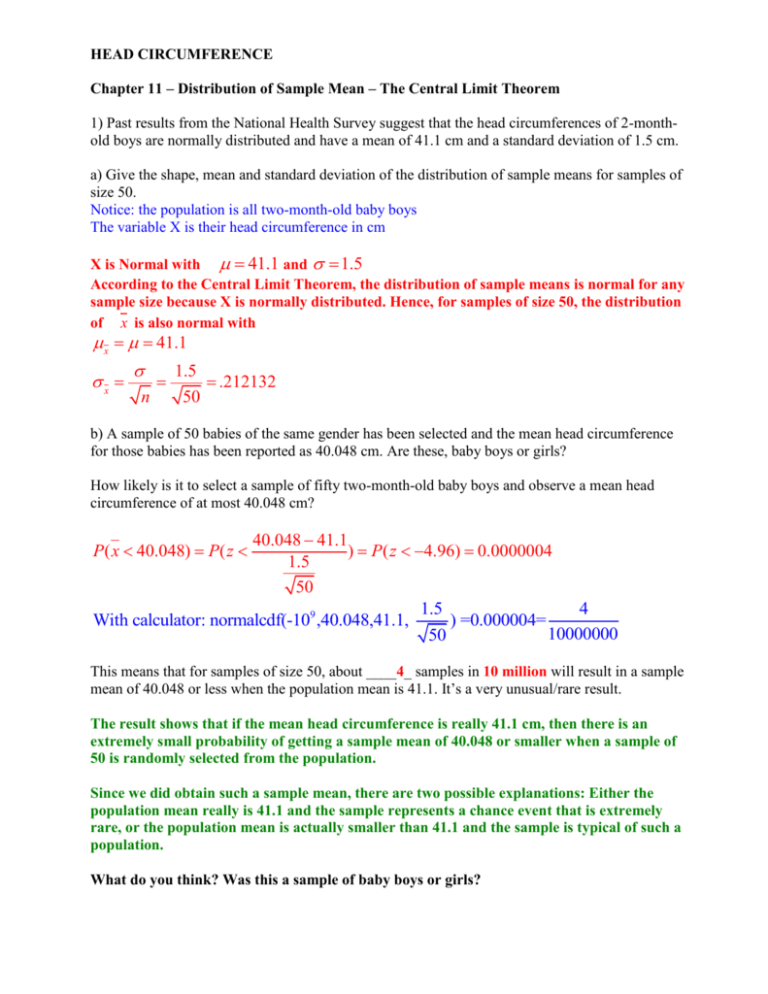
HEAD CIRCUMFERENCE Chapter 11 – Distribution of Sample Mean – The Central Limit Theorem 1) Past results from the National Health Survey suggest that the head circumferences of 2-monthold boys are normally distributed and have a mean of 41.1 cm and a standard deviation of 1.5 cm. a) Give the shape, mean and standard deviation of the distribution of sample means for samples of size 50. Notice: the population is all two-month-old baby boys The variable X is their head circumference in cm X is Normal with 41.1 and 1.5 According to the Central Limit Theorem, the distribution of sample means is normal for any sample size because X is normally distributed. Hence, for samples of size 50, the distribution of x is also normal with x 41.1 x n 1.5 .212132 50 b) A sample of 50 babies of the same gender has been selected and the mean head circumference for those babies has been reported as 40.048 cm. Are these, baby boys or girls? How likely is it to select a sample of fifty two-month-old baby boys and observe a mean head circumference of at most 40.048 cm? 40.048 41.1 ) P( z 4.96) 0.0000004 1.5 50 1.5 4 With calculator: normalcdf(-109 ,40.048,41.1, ) =0.000004= 10000000 50 P( x 40.048) P( z This means that for samples of size 50, about ____4_ samples in 10 million will result in a sample mean of 40.048 or less when the population mean is 41.1. It’s a very unusual/rare result. The result shows that if the mean head circumference is really 41.1 cm, then there is an extremely small probability of getting a sample mean of 40.048 or smaller when a sample of 50 is randomly selected from the population. Since we did obtain such a sample mean, there are two possible explanations: Either the population mean really is 41.1 and the sample represents a chance event that is extremely rare, or the population mean is actually smaller than 41.1 and the sample is typical of such a population. What do you think? Was this a sample of baby boys or girls?

